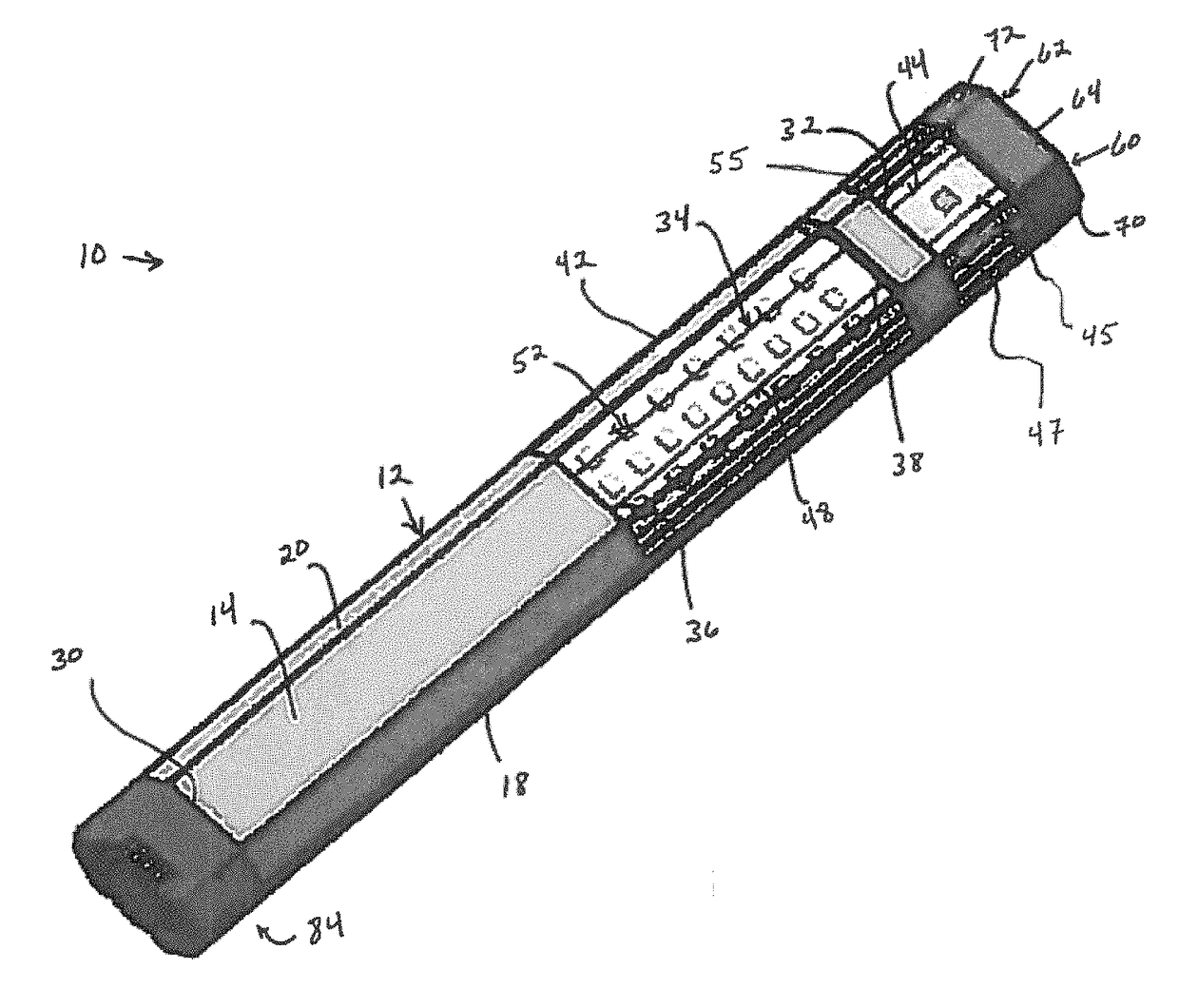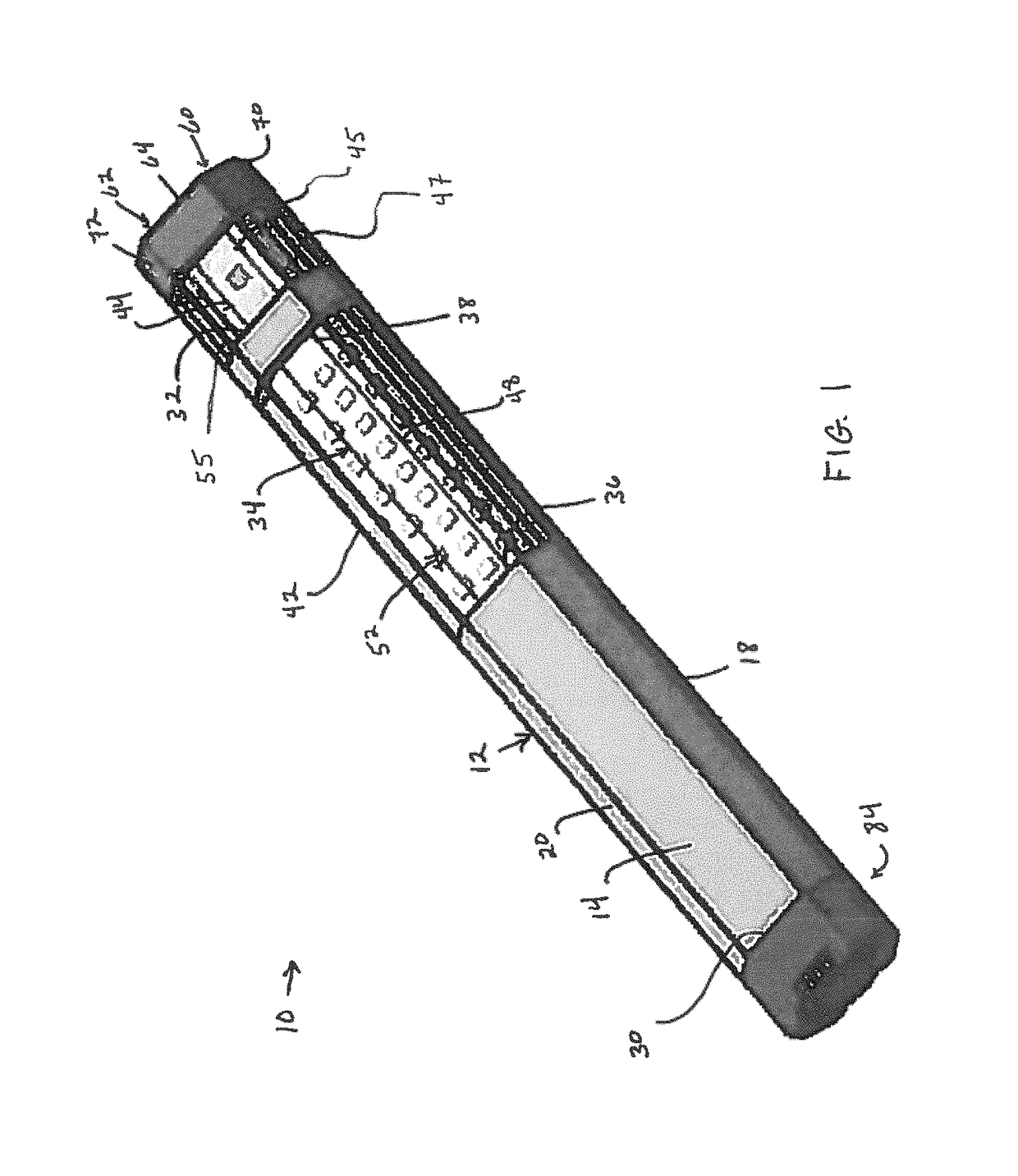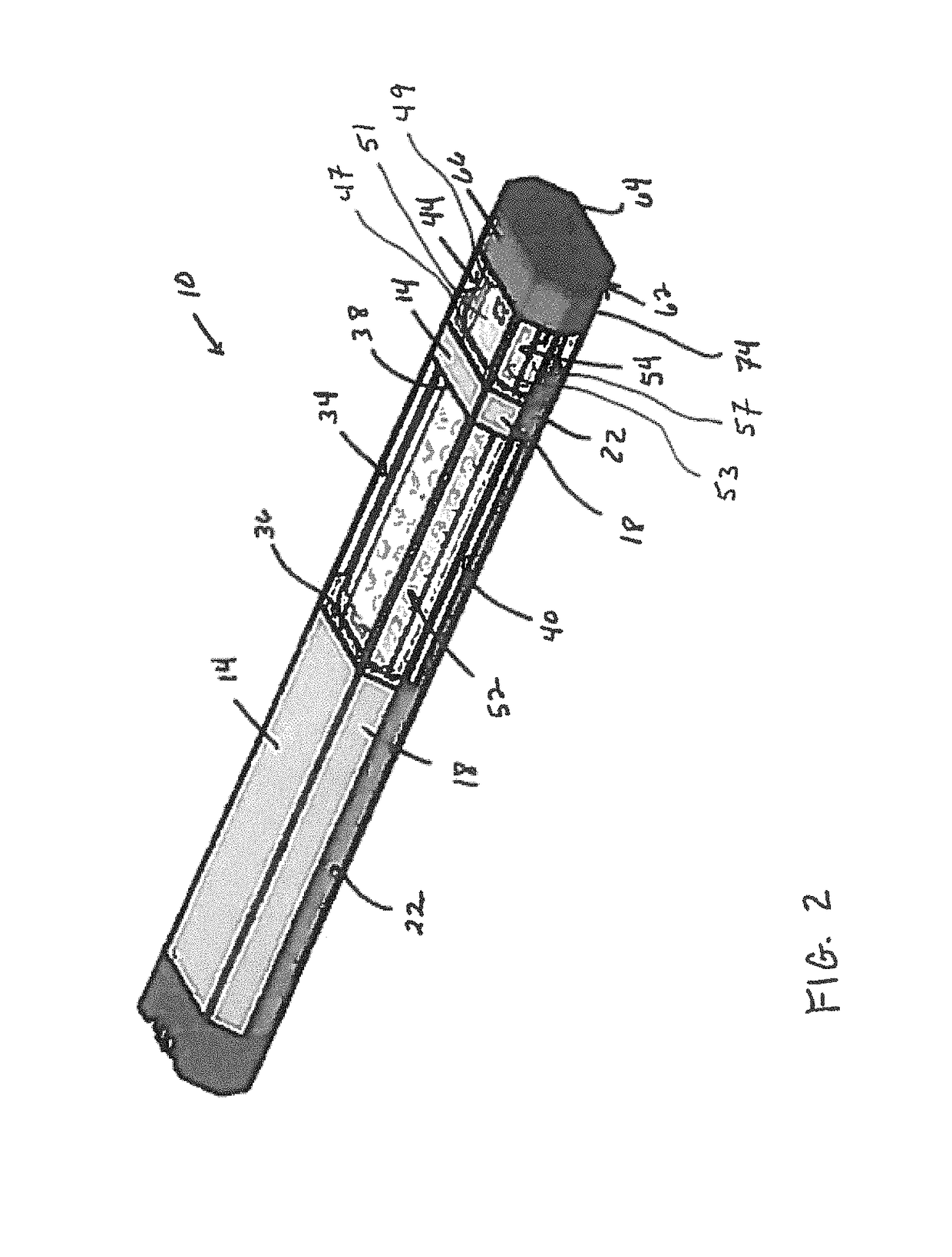Light stick
a technology of light sticks and lanterns, which is applied in the direction of lighting and heating apparatus, lighting support devices, light source combinations, etc., can solve the problems of non-satisfactory prior lanterns of this type, limited the need for lanterns to be generally upright, and non-directional exposed bulbs
- Summary
- Abstract
- Description
- Claims
- Application Information
AI Technical Summary
Benefits of technology
Problems solved by technology
Method used
Image
Examples
Embodiment Construction
[0020]Preferred embodiments of the present disclosure will he described hereinbelow with reference to the accompanying drawings. In the following description, well-known functions or constructions are not described in detail to avoid obscuring the invention in unnecessary detail. Throughout the drawings, like reference numerals represent like elements.
[0021]Referring to FIGS. 1-8, a light stick 10 according to an embodiment of the present disclosure is shown. Referring to FIGS. 1-6, light stick Its comprises a housing 12 having an octagonal shaped body which extends along a longitudinal Y axis. To that end, housing 12 has a top side 14 oppositely situated to a bottom side 16, an upper proximal lateral side 18 oppositely situated to an upper distal lateral side 20, a medial proximal lateral side 22 oppositely situated to a medial distal lateral side 24, and a lower proximal lateral side 26 oppositely situated to a lower distal lateral side 28. Upper proximal and distal lateral sides ...
PUM
 Login to View More
Login to View More Abstract
Description
Claims
Application Information
 Login to View More
Login to View More - R&D
- Intellectual Property
- Life Sciences
- Materials
- Tech Scout
- Unparalleled Data Quality
- Higher Quality Content
- 60% Fewer Hallucinations
Browse by: Latest US Patents, China's latest patents, Technical Efficacy Thesaurus, Application Domain, Technology Topic, Popular Technical Reports.
© 2025 PatSnap. All rights reserved.Legal|Privacy policy|Modern Slavery Act Transparency Statement|Sitemap|About US| Contact US: help@patsnap.com



